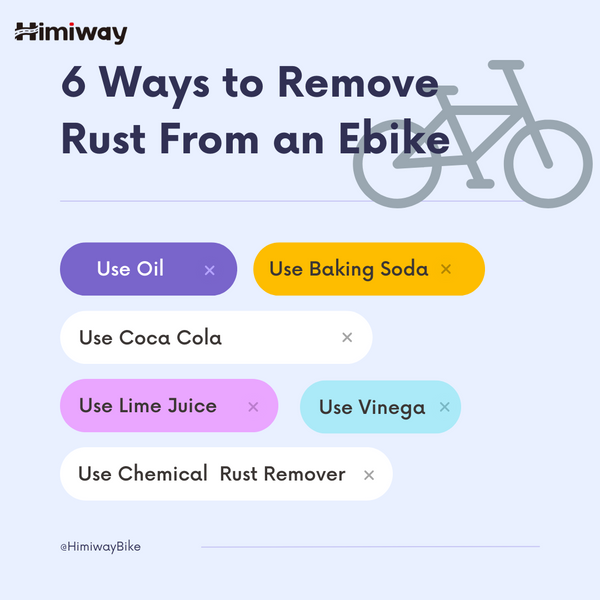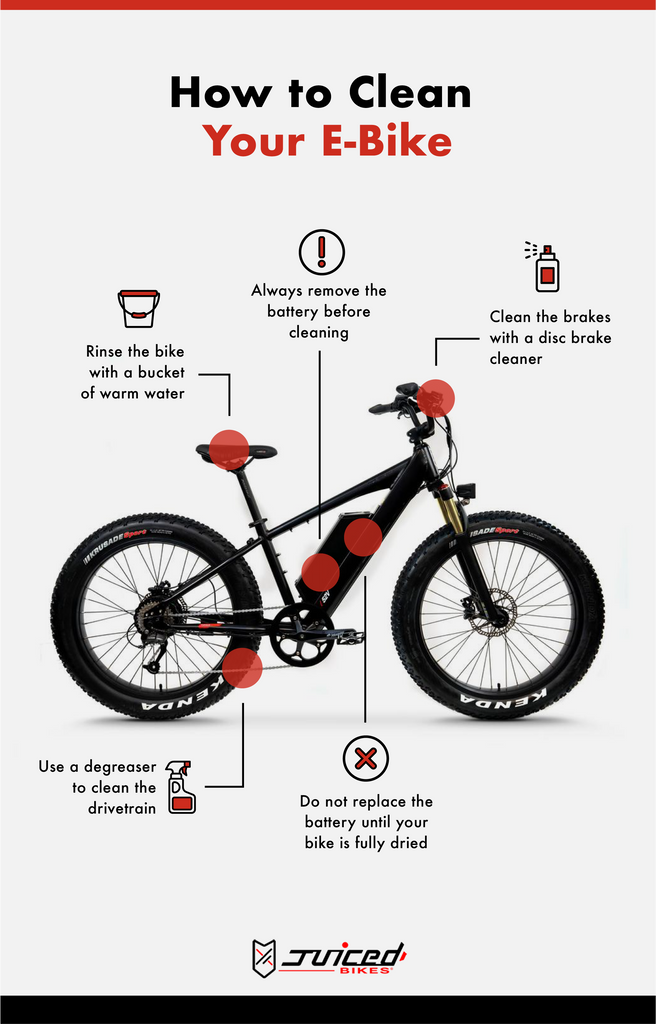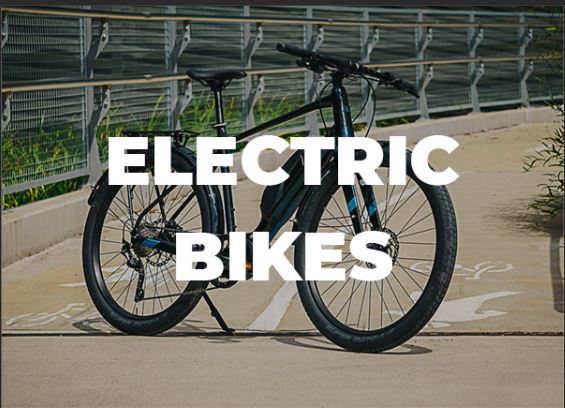So you’ve invested in an electric bike and you want to make sure it stays in top shape for years to come. One of the key factors in keeping your e-bike running smoothly is preventing rust from wreaking havoc on its frame and components. Rust not only affects the appearance of your bike, but it can also weaken the structure and compromise performance. Luckily, we’ve got you covered with some handy tips to keep your electric bike rust-free. Whether you’re a novice rider or a seasoned pro, these maintenance suggestions will help ensure your e-bike stays in tip-top condition, whether you use it for daily commuting, off-road adventures, or weekend leisure rides.
1. Regular Cleaning
Regular cleaning is essential for keeping your electric bike’s frame and components rust-free. By removing dirt, grime, and debris, you can prevent corrosion and maintain your bike’s performance and appearance. Here are some important steps to follow when cleaning your e-bike:
1.1 Choosing the Right Cleaning Solution
When cleaning your electric bike, it’s important to choose a cleaning solution that is specifically designed for bicycles. Avoid using harsh chemicals or solvents that could damage the frame or components. Look for a gentle, biodegradable cleaner that is safe for use on all surfaces of your e-bike.
1.2 Cleaning the Frame
Start by rinsing your bike with a hose or bucket of water to remove any loose dirt or debris. Then, apply the chosen cleaning solution to a sponge or soft brush and gently scrub the frame, paying extra attention to areas with dirt buildup. Rinse thoroughly with water to remove all traces of the cleaning solution.
1.3 Cleaning the Components
Next, focus on cleaning the various components of your electric bike. Use a cloth or brush to clean the handlebars, stem, seat post, and any other exposed metal parts. For hard-to-reach areas, such as the drivetrain and gears, use a small brush or toothbrush to remove dirt and grime. Be thorough but gentle to avoid damaging delicate components.
2. Drying and Storage
Proper drying and storage are crucial to prevent rust formation on your e-bike. Follow these steps to ensure your bike is dry and stored correctly:
2.1 Drying After Cleaning
After cleaning your electric bike, it’s important to thoroughly dry it to prevent moisture from seeping into the frame and components. Use a clean towel or air compressor to remove excess water, paying attention to hard-to-reach areas. Leave your bike in a well-ventilated area to air dry completely before storing it.
2.2 Proper Storage
When it comes to storing your electric bike, it’s best to keep it in a dry and temperate environment. Avoid storing it in damp basements or garages prone to moisture. Invest in a bike cover or find a designated storage area that protects your bike from dust, humidity, and extreme temperature changes. If storing your e-bike for an extended period, consider removing the battery and storing it separately in a cool, dry place.

3. Protective Coatings
Applying protective coatings to your electric bike’s frame and components can provide an extra layer of defense against rust. Consider the following protective measures:
3.1 Frame Protection
To protect your e-bike’s frame, you can apply a specialized frame protection spray or wax. These products create a barrier that repels water and inhibits rust formation. Follow the manufacturer’s instructions when applying the protective coating, ensuring thorough coverage of all exposed metal surfaces. Reapply the coating periodically, especially after washing or riding in wet conditions.
3.2 Component Protection
In addition to protecting the frame, it’s crucial to safeguard your electric bike’s components from rust. Apply a thin layer of silicone-based or waterproof grease to metal parts such as bolts, nuts, and screws. This will help prevent water ingress and corrosion. Take care not to apply too much grease, as it can attract dirt and grime, leading to accelerated wear and tear.
4. Lubrication
Proper lubrication is essential for keeping your e-bike’s moving parts in optimal condition, reducing friction, and preventing rust. Here are some steps to follow when lubricating your electric bike:
4.1 Choosing the Right Lubricant
When selecting a lubricant for your e-bike, consider the specific needs of each component. Use a high-quality chain lubricant for your bike’s chain, while opting for a lighter, less viscous lubricant for bearings, derailleurs, and other moving parts. Avoid using silicone-based lubricants, as they can attract dust and dirt.
4.2 Lubricating the Chain
Apply chain lubricant to your e-bike’s chain while rotating the pedals backward. Use a cloth to remove any excess lubricant, as an excess can attract dirt and grime. A well-lubricated chain will ensure smooth shifting and reduce the risk of rust formation.
4.3 Lubricating Other Moving Parts
Apart from the chain, certain components of your electric bike also require lubrication. Apply a small amount of lubricant to the pivot points of the brakes, derailleurs, and suspension system. Check your e-bike’s user manual for specific instructions on lubricating these parts, as different brands and models may have unique requirements.

5. Avoiding Excessive Exposure to Water
Excessive exposure to water can accelerate rust formation on your electric bike. While riding in wet conditions is sometimes unavoidable, taking precautions can help protect your e-bike. Consider the following tips:
5.1 Riding in Wet Conditions
When riding in wet conditions, it’s important to protect your electric bike from excessive water exposure. Consider using fenders or mudguards to prevent water from splashing onto the frame and components. Additionally, wearing appropriate rain gear can help minimize water contact with your bike.
5.2 Avoiding Deep Puddles and Streams
While it may be tempting to ride through puddles or streams, it’s best to avoid them to prevent water ingress. Excessive water can seep into your e-bike’s frame and components, leading to rust formation. If you do encounter a puddle or a stream, try to ride through it slowly and avoid submerging the entire bike.
6. Regular Inspection
Regular inspections of your electric bike’s frame and components are crucial for early rust detection and prevention. Follow these steps to ensure your e-bike stays rust-free:
6.1 Inspecting the Frame
Regularly inspect your e-bike’s frame for any signs of rust. Pay close attention to areas prone to moisture buildup, such as welds, joints, and crevices. If you notice any rust spots, address them promptly using appropriate rust removal methods and treatments (covered in section 8).
6.2 Checking Components for Signs of Rust
Apart from the frame, inspect your e-bike’s components for signs of rust. Thoroughly check the chain, gears, brake calipers, and other metal parts. Any signs of rust should be addressed immediately to prevent further damage and ensure optimal performance.

7. Using Fenders and Mudguards
Installing fenders or mudguards on your electric bike can provide essential protection against water and debris, helping to keep your frame and components rust-free. Consider the following:
7.1 Installing Fenders
Fenders or mudguards can be easily attached to your e-bike’s frame, providing protection from water splashes caused by wet roads or trails. Choose fenders that are suitable for your bike’s wheel size and make sure they are securely attached to avoid rattling or interference with the bike’s performance.
7.2 Benefits of Using Fenders
Using fenders or mudguards not only helps keep your electric bike rust-free but also improves your riding experience. By preventing water and debris from being flung onto the frame and components, fenders minimize the risk of rust formation and reduce the need for frequent cleaning and maintenance.
8. Rust Removal and Treatment
If rust does appear on your electric bike’s frame or components, it’s crucial to address it promptly to prevent further damage. Here are some steps to follow when removing and treating rust:
8.1 Removing Surface Rust
For surface rust, start by scrubbing the affected area with a rust remover or a mixture of baking soda and water. Use a soft brush or cloth to gently scrub the rusted area, then rinse with water and dry thoroughly. Apply a rust converter or inhibitor to prevent further rust development.
8.2 Treating Deep Rust
If rust has penetrated deeply into the metal, more intensive treatment may be required. Use sandpaper or a wire brush to remove the rust and expose the clean metal surface. Apply a rust remover or converter, following the manufacturer’s instructions. Finally, touch up the affected area with a suitable touch-up paint or protective coating to prevent future rust formation.

9. Avoiding Salt and Corrosive Substances
Salt and other corrosive substances, such as road de-icing chemicals, can accelerate rust formation on your electric bike. Minimize exposure to these substances by following these tips:
9.1 Riding in Winter Conditions
When riding your e-bike in winter conditions where salt and other corrosive substances are commonly used, it’s crucial to take extra precautions. Thoroughly clean your bike after each ride, paying special attention to areas exposed to salt and chemical sprays. Regularly inspect your bike for any signs of corrosion and address them promptly.
9.2 Cleaning off Salt Residue
After riding in areas treated with salt or corrosive substances, it’s important to clean off any residue to prevent rust formation. Rinse your bike with water and use a sponge or soft brush to remove any salt or chemical deposits. Dry your bike thoroughly afterwards to prevent moisture accumulation.
10. Professional Maintenance
While regular home maintenance can help prevent rust on your electric bike, there may be instances where professional help is necessary. Here’s when you should consider seeking professional maintenance:
10.1 Knowing When to Seek Professional Help
If you notice significant rust damage, mechanical issues, or if your e-bike requires complex repairs, it’s best to consult a qualified e-bike mechanic. They have the expertise and specialized tools to address more advanced maintenance needs and ensure the longevity of your electric bike.
10.2 Finding a Qualified E-bike Mechanic
When searching for a qualified e-bike mechanic, look for professionals who have experience working specifically with electric bicycles. Check reviews, ask for recommendations from fellow e-bike owners, or consult your e-bike manufacturer for a list of authorized service centers. Proper maintenance by a qualified professional will not only keep your e-bike rust-free but also ensure its overall performance and reliability.
By following these comprehensive tips, you can keep your electric bike’s frame and components rust-free, ensuring optimal performance and longevity. Regular cleaning, drying, and proper storage are essential, along with applying protective coatings and lubricating moving parts. Avoid excessive exposure to water, regularly inspect your bike for signs of rust, and consider using fenders or mudguards. If rust does occur, address it promptly with appropriate removal and treatment methods. Finally, seek professional maintenance when needed for complex repairs or issues. With these practices in place, you can enjoy many years of rust-free riding on your electric bike.




